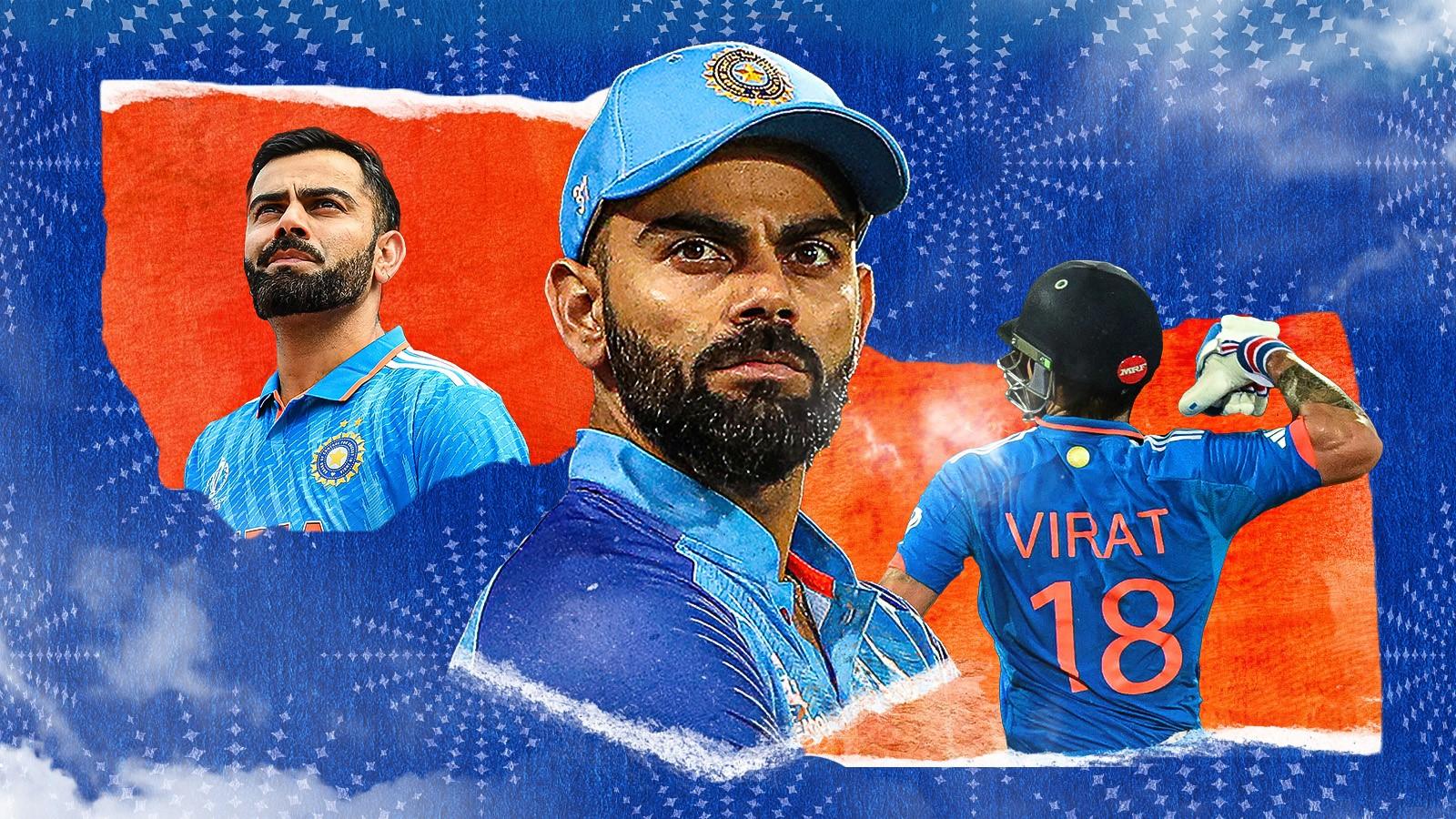Cricket World Cup: Why India looks unstoppable
- Published

India have never dominated a World Cup in the manner in which they are doing now
Virat Kohli mania has been driving much of the Indian fans' interest in the Cricket World Cup.
First, will India's star batter get 49 centuries and equal Sachin Tendulkar's record? Now that he has, will he get to 50? Then, what about 51… and so it will go on. The figures are mind-boggling. Indian batters in ODI cricket occupy the top slots among century-makers, external, with captain Rohit Sharma third with 31.
On Sunday, India beat South Africa, the second-placed team in the league, by 243 runs, dismissing them for just 83. Is that really the difference between India and the rest? Or is that merely what happens when 11 players perform at their peak, everything coming together on a single day at a single venue with a single purpose? Can they do it two more times?
Kohli mania might have pushed into the background the terrific work of some others. Fast bowler Jasprit Bumrah's 15 wickets, for instance, have come at an average of just over 15; and batters have not managed to score off 70% of his deliveries. In the powerplay (first 10 overs), the percentage of dot balls - balls bowled without a run - rises to 83. This is any bowler's dream - to both take wickets and keep the runs down. Bumrah puts the opposition under pressure from the start.

Jasprit Bumrah's 15 wickets so far have come at just over an average of 15
His skipper Rohit Sharma does the same with the bat, hitting out straight away. The tactic has worked well. The South Africa match saw the best of this as India made 91 in the powerplay. Sharma made just 40 off 24 balls but saw his team pass 60 in the sixth over, thus giving Kohli and Shreyas Iyer time to settle down and add 134. Sharma and Shubman Gill picked Marco Jansen, until then the most successful bowler in the powerplay, for special attention. There was method in the mayhem.
Rohit Sharma and coach Rahul Dravid deserve credit for the strategy, while the Indian top order deserves praise for carrying it through. This is India's dream team.
India have never dominated a World Cup, perhaps any tournament, in the manner in which they are doing now. Each element - the seamers, the spinners, the openers, the middle order - has performed with casual confidence and gusto. There have been centuries, five-wicket hauls, excellent wicketkeeping, fabulous catches.
India's greatest fast bowling team in a World Cup - Bumrah, Mohammed Shami, Mohammed Siraj - is meshing well with its most effective spin duo, both left armers, one a finger spinner (Ravindra Jadeja) and the other a wrist spinner (Kuldeep Yadav). You can't ask for more in a World Cup played at home.

Indian captain Rohit Sharma has been in sparkling form
As they await the semi-finals in Mumbai, there are just two areas of concern: the fact that India play only five bowlers, and that the team hasn't been tested in a close match.
But this is a unique bowling combination, each of the five capable of running through a side. None of them believe his job is merely to keep the runs down. When you have five such wicket-taking bowlers, the cliché about one of them having an off-day and the team struggling might not apply. We will know soon enough.
Except for the game against Australia, where they were pushed after losing three quick wickets at the start, the batting hasn't been under pressure. Those who were loudest in suggesting recently that Kohli's end was nigh are now the ones cheering just as loudly in anticipation of his next century.
India has enjoyed the pleasure of those returning from injury fitting in neatly, as well as those who looked out of touch finding their form. Shami, thought not good enough for the first four games, now has 16 wickets at the ridiculous average of seven. Iyer, who took time to find his feet, has settled into the No 4 slot. That India couldn't find an all-rounder to replace Hardik Pandya, whose ankle injury ended his World Cup, does say something about their domestic cricket. But that discussion can wait till after the tournament. India didn't miss Pandya, and that is remarkable.

Shami, thought not good enough for the first four games, now has 16 wickets
As for close matches, you can't blame a team for being so good that it finishes matches before television viewers in India even sit down to dinner.
World Cups are team events till the knockouts, and then one inspired individual performance can bring the dream to an end.
It happened to India in the 2003 World Cup when, after winning eight games in a row they met Australia in the final. Ricky Ponting made 140 off 121 deliveries, including eight sixes. You can't plan against such an inspired knock, merely pray that the batter gets himself out. It is a version of Mike Tyson's famous dictum: "Everyone has a plan until they get punched in the mouth."
As Dravid said recently: "If we keep executing our skills and somebody outplays us and beats us, then good luck. We shake their hand and walk away."
Suresh Menon has written books on Sachin Tendulkar and Bishan Bedi
BBC News India is now on YouTube. Click here, external to subscribe and watch our documentaries, explainers and features.

Read more India stories from the BBC:

- Attribution
- Published5 November 2023

- Published6 October 2023

- Published1 October 2023
